Farm Sector Revenue and Food Sustainability Leadership Opportunity
Overview
- Background
- Soybean feed quality findings
- Corn demand findings
- Reducing livestock GHGs
- Supporting farm and consumer sustainability success
“Looking at every prediction for 2050, we can’t miss any opportunity to produce food more efficiently.”
— Dr. Bart Borg, Standard Nutrition Company
Soybean Protein Declining
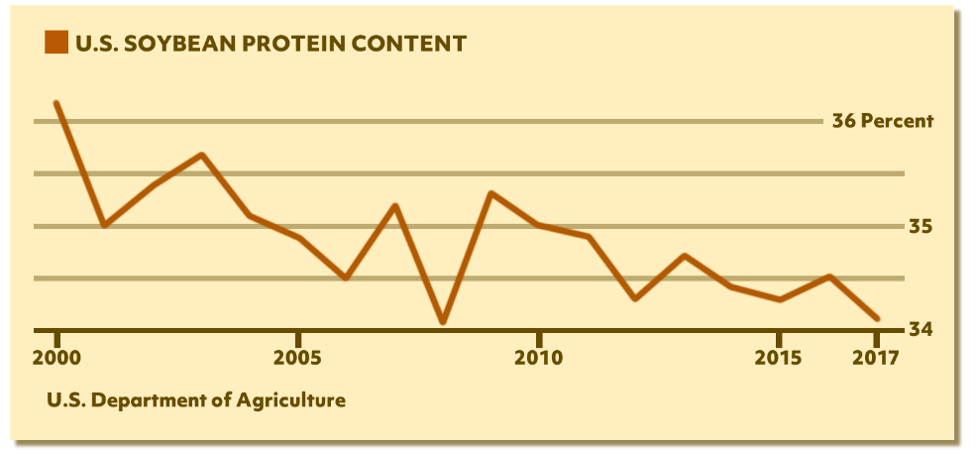
Soybeans Losing Feed Market Share
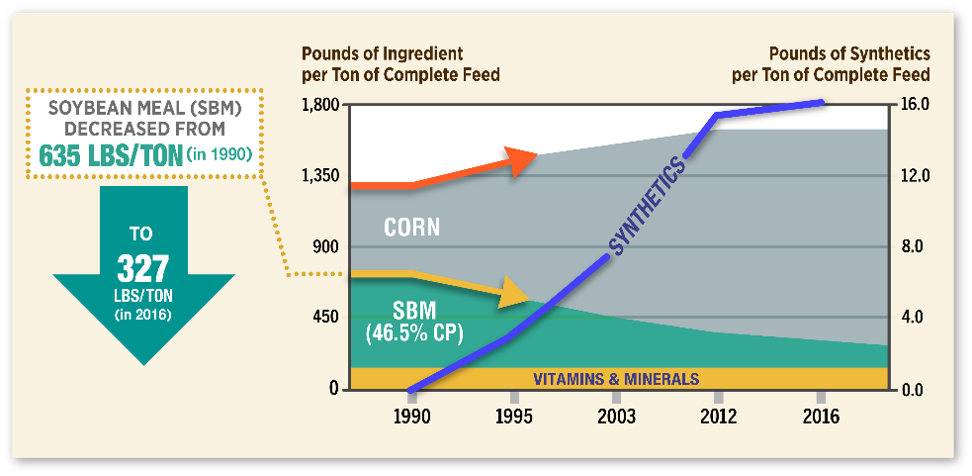
Source: Dr. Bart Borg, Director of Feed Operations, Standard Nutrition Services — sample formulations.
Farm Revenue Losses — Soybean Meal Use 2000 vs. 2010

Source: R. Dean Boyd, PhD, Nutritionist for Hanor Company
Feed Formula Comparison via Dalex Software
44 SBM Formula Cost – $191.20
SBM used/ton – 437.22 lbs
Corn used/ton – 1,481.49 lbs
Fat used/ton – 20.87 lbs
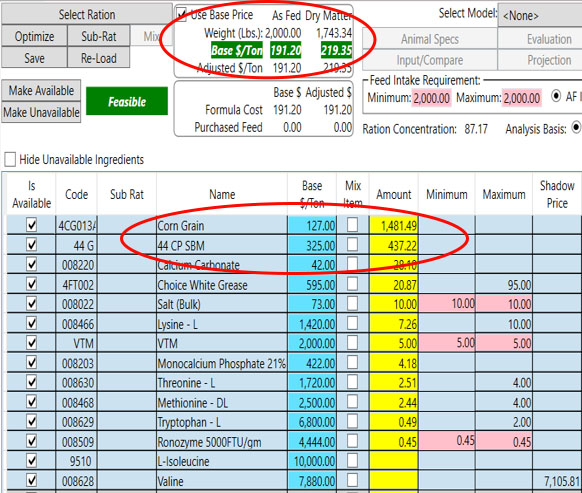
50 SBM Formula Cost – $180.72
SBM used/ton – 372.67 lbs
Corn used/ton – 1,563.53 lbs
Fat used/ton – 2.54 lbs

Increasing Soybean Protein Decreases
Soybeans and Increases Corn in Feed Rations
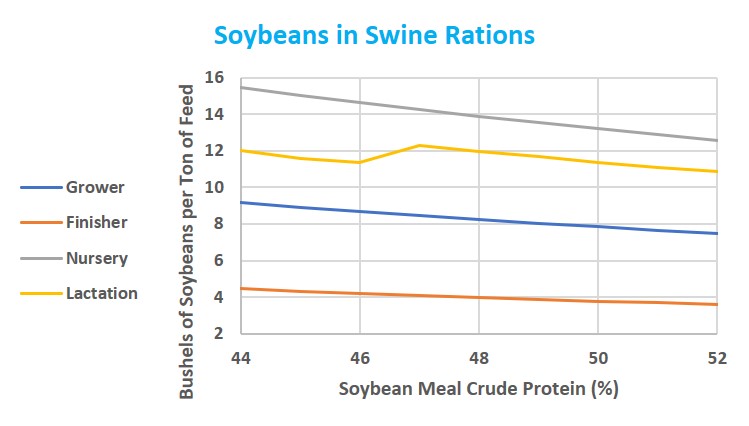
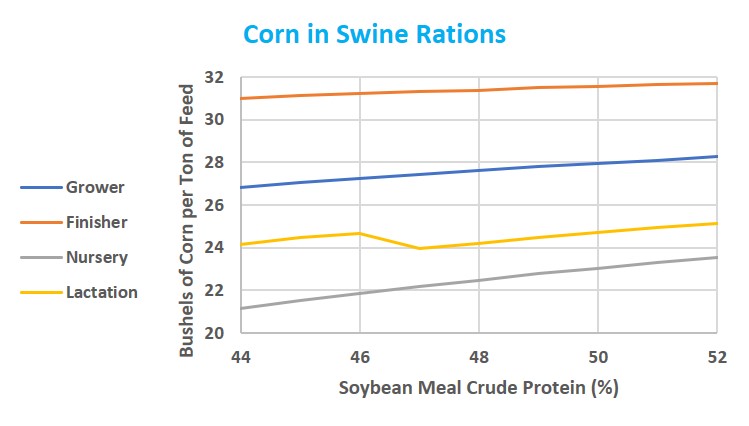
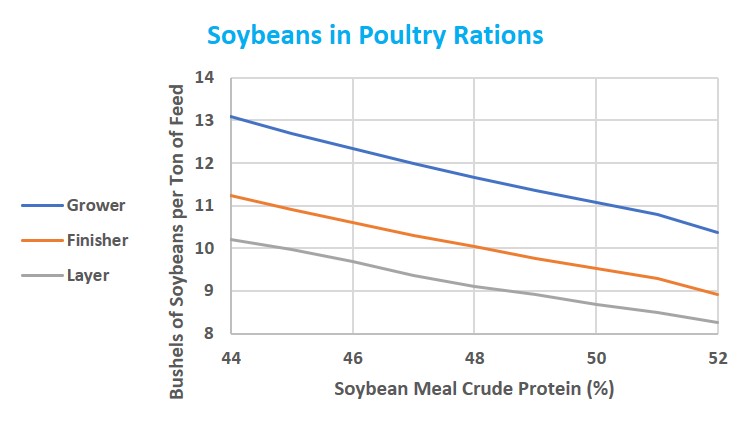

Implied Aggregate Value Goes Up with Better Soy

Based on feed usage and prices for 2018 market year
Assumes all swine and poultry feed rations increased CP
This added value can be shared across the value chain
More Corn Demand
High quality soybeans increase corn demand up to:
5.2%
in pork
production
13.8%
in broiler production
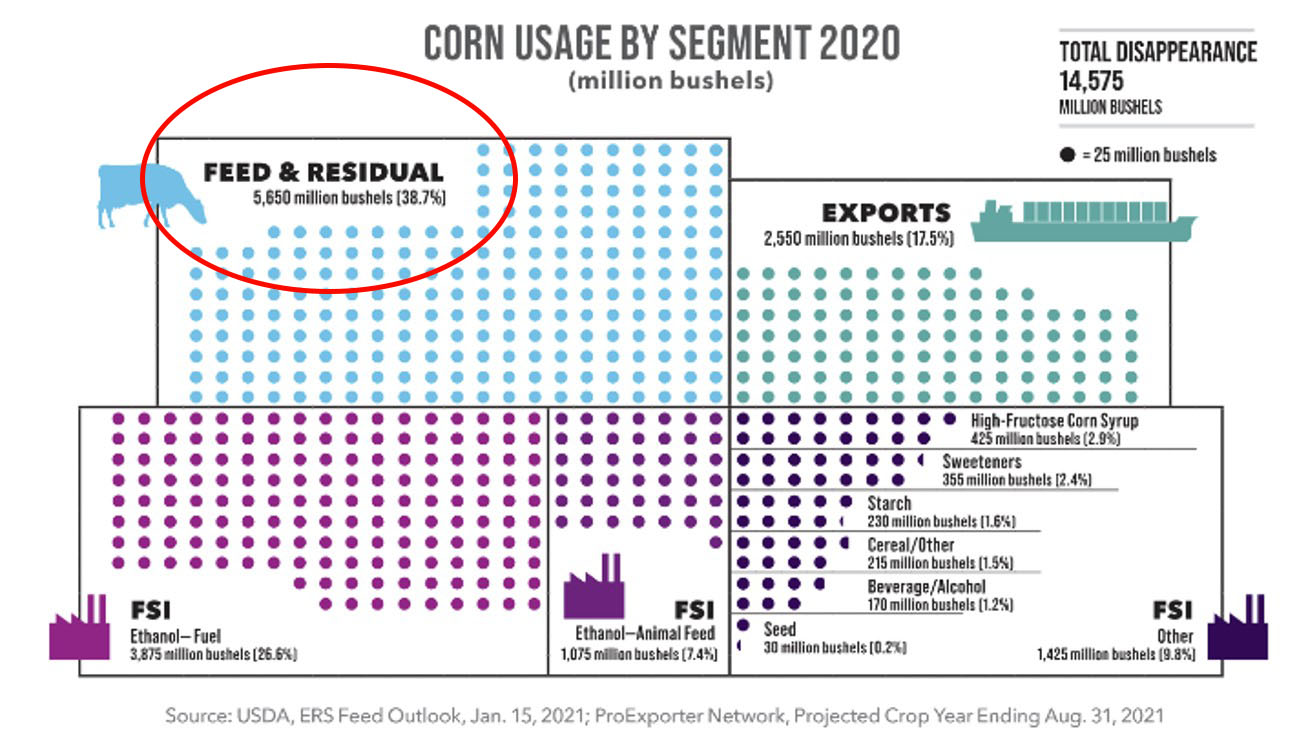
Reduced GHGs
- GHGs and energy use decrease with higher soybean quality
- Corn and GHG deltas create an industry leadership opportunity
Natural feed has lower carbon intensities than DDGS and synthetics
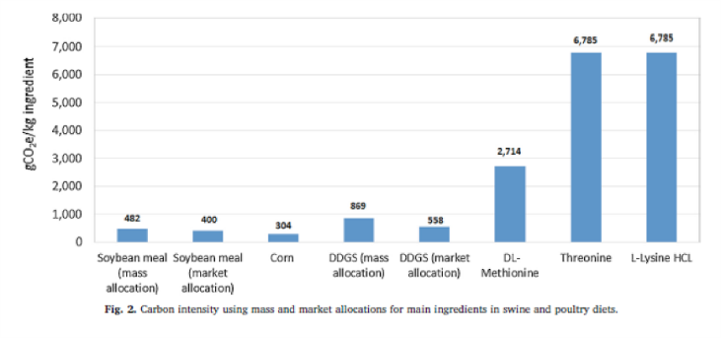
Benavides et al.
Increasing Soybean Meal Protein in Swine and
Poultry Diets Decreases GHG Emissions
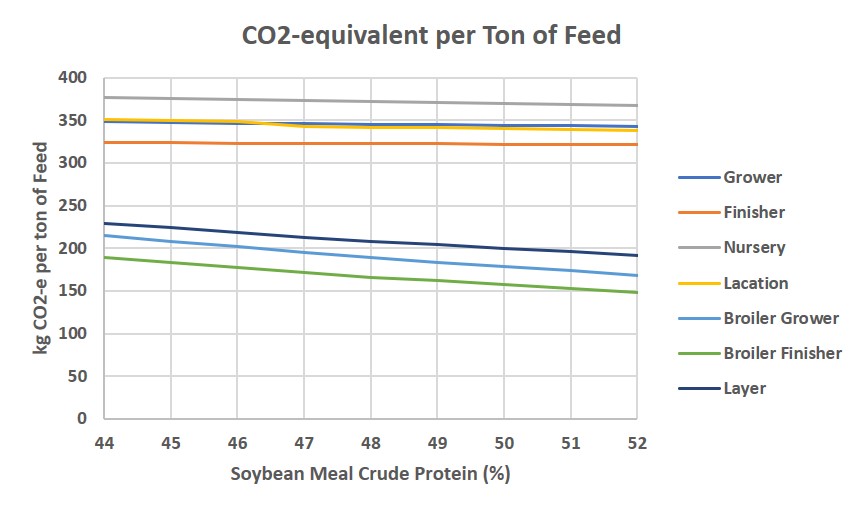
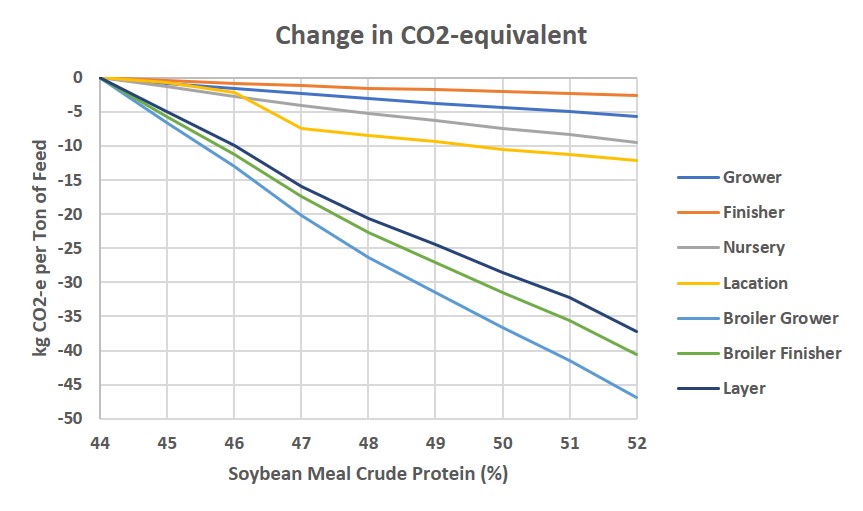
Compared to 44% CP, CO2-equivalent
1% to 3.5% for swine diets across phases
16% to 22% for poultry diets across phases

Farmer Viewpoints
